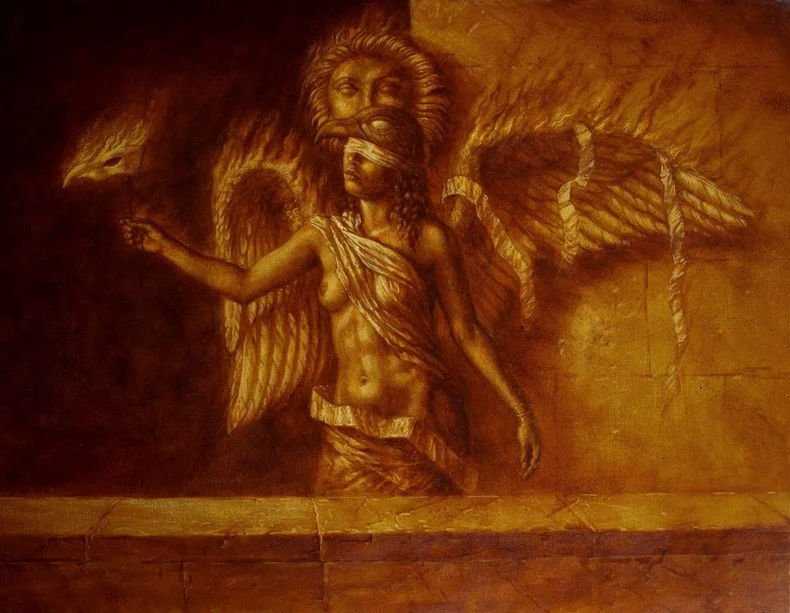Is AI Fire from the Gods or an Unsinkable Ship?
Artist: Jake Baddeley
The contemporary surge of artificial intelligence repeats the Titanic–Promethean pattern: collective faith in technical “gigantism.” A possible hubristic inflation, which invites compensatory descent and sacrifice. Drawing on Jung’s account of unconscious compensation and individuation, a psychologically informed relation to AI would cultivate sacrificial limits and the capacity to hold the tension between omnipotent fantasy and human finitude, thereby mitigating catastrophic cultural enactments.
AI may well be the latest or even last expression of modernity’s technocratic drive to mastery. A type of technological Tower of Babel reaching for god-like omnipotence. However, “We forget that Promethean abandon can lead to an incarnation of gigantism” (Slater, p.112). To forsake the limitation of the gods with either reckless or altruistic motivations, whether it be fire or a large language model, does not erase the “spiritual problem of modern man” and “unconscious compensation” (Jung, 1958, p. 86).
The cultural discourse around AI promises salvation, inevitability, “unsinkable” systems, which mirrors the overconfident launch of the Titanic with Promethean technology. This collective inflation incites a culture of hubris that exploits. Yet “In the failure to sacrifice, we are sacrificed” (Slater, p. 114). Hubris constellates its opposite: deflation, sacrifice, and at times a literal “Titanic” catastrophe. “The intellectual does not yet know that his consciousness is not his total psyche” (Jung, 1964, p.102).
AI may not be salvation or damnation, but a potent, dangerous Promethean gift. A personal and collective approach to individuation asks us to “hold the tension” between innovation and restraint as a prophylactic against the consequences of Titanic-tech-fueled hubris. AI’s fate will mirror that of the Titanic or Prometheus, depending on whether we unconsciously enact hubris or consciously accept sacrificial limits. Scaled from psyche to culture, may allow AI to serve—not sink—humanity.
References
Jung, C. G. (1958). Yoga and the West. In G. Adler & R. F. C. Hull (Eds.), Civilization in transition (Collected Works of C. G. Jung, Vol. 10). Kegan Paul and Routledge.
Jung, C. G. (1964). Man and his symbols. Doubleday.
Slater, G. (1998). Re-sink the Titanic. Spring, 62, 104–120. https://www.jungcentralohio.org/wp-content/uploads/2025/09/Re-Sink-the-Titanic.pdf


